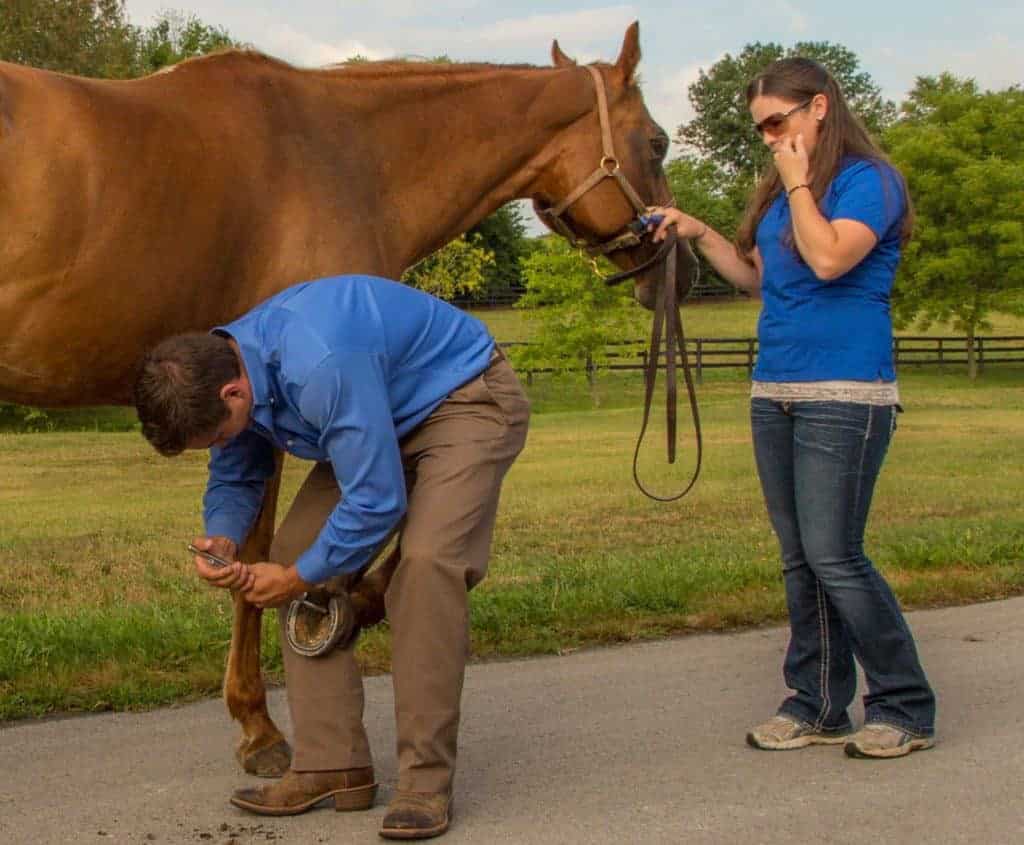Diagnosing Equine Lameness Early

Catching and diagnosing equine lameness early, when you first notice something is “not quite right,” gives your horse a better chance for a quick recovery.
How to Help the Not-So-Ideal Hoof

Even horses with less-than-ideal feet can lead sound and productive careers.
Horse Hoof Care Essentials at Hand

What’s in your horse’s hoof-care box? Here are the items that hoof care professionals recommend you keep on hand.
4 Misconceptions About Alfalfa

Does alfalfa cause kidney or respiratory problems or make horses hyper? Specialists shed light on these myths and more.
Horse Foot Bruises

The average horse is more likely to encounter a foot bruise than any other lameness. If you recognize the causes of foot bruises and understand their treatment and prevention, you can stave off discomfort in your horse and perhaps avoid an abscess.
Hoof Cracks: Types and Treatment

Whether big or small, these hoof wall imperfections require prompt repair and stabilization.
Life After Laminitis

Your laminitis survivor’s true prognosis depends on how you manage him after the worst is over.
The Trouble With Mud

When the going gets muddy, the muddy get hoof problems. Here’s what to watch for in your horses.
Managing Chronic Laminitis

Horses with chronic laminitis should be closely monitored during treatment and recovery. Here’s what to consider.
Things You Should and Should Not Put on a Horse’s Wound

Is the ointment you’re using on that cut helping or hurting? Remember these tips when treating horse wounds.
Don’t Ignore Your Horse’s Hooves this Winter and Spring

Don’t put your horse at risk for developing problems such as thrush and abscesses. Here’s how to prevent these issues.
How to Manage Limb Lacerations in Horses

Knowing how and being prepared to triage serious wounds can help improve a patient’s likelihood for a good recovery.
Using Flexion and Wedge Tests to Diagnose Foot Pain

Learn how equine practitioners can assess and pinpoint the source of foot pain using a methodical series of tests.
Hoof Abscesses in Horses

Dr. Erin Denney-Jones talks about hoof abscesses in horses and the common treatment options.
Physical Exam of the Horse Hoof

Learn about healthy hoof conformation and common, potentially function-affecting abnormalities.
Thrush Diagnosis and Treatment
Most cases of thrush occur in inactive horses that live in stalls. Unfortunately, this describes a huge percentage of horses in the United States, since over the past few decades horses have become ‘apartment dwellers.’







